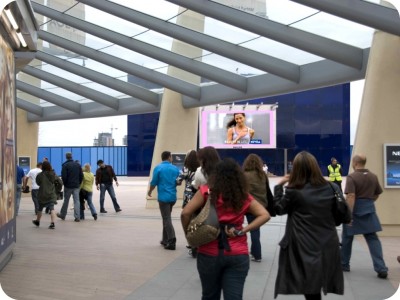Pohled zvenčí: DOOH ve Spojeném Království
 Často se stává, že pokud jste na nějaké pozici příliš dlouho ztrácíte nadhled. Někdy stačí trochu poodstoupit a podívat se na situaci z jiného úhlu nebo porovnat jak to dělají jinde. Z pohledu DOOH je to jinde v jiné zemi, proto si dnes můžete přečíst komentář Marka Pigou (ředitele Screenmedia expo), který se vyjádřil pro Dmarketing.CZ o stavu DOOH ve Spojeném Království, jednom z nejrozvinutějších trhů DOOH.
Často se stává, že pokud jste na nějaké pozici příliš dlouho ztrácíte nadhled. Někdy stačí trochu poodstoupit a podívat se na situaci z jiného úhlu nebo porovnat jak to dělají jinde. Z pohledu DOOH je to jinde v jiné zemi, proto si dnes můžete přečíst komentář Marka Pigou (ředitele Screenmedia expo), který se vyjádřil pro Dmarketing.CZ o stavu DOOH ve Spojeném Království, jednom z nejrozvinutějších trhů DOOH.
Situace zde vůbec nevypadá špatně, segment DOOH zaznamenává trvalý růst a co je take důležité, obor se dostal z experimentálních časů do stavu plnohodnotného media, které je součástí marketingového mixu. Svědčí o tom i podíl 11,4% z cekového outdoor trhu Británie. Ale více už v samotném komentáři:
The United Kingdom has one of the best-developed digital out-of-home markets in the world, but much research remains anecdotal, partisan or over-optimistic. It was therefore doubly notable when figures came earlier this year from the Outdoor Media Centre ‚ the organisation until recently known as the Outdoor Advertising Association, representing British outdoor media owners ‚ confirming that during 2010, digital outdoor advertising revenue in the UK passed £100m (‚Ǩ114m) for the first time.
36 percent year-on-year growth signalled a return to buoyancy after the economic doldrums of 2009, and digital revenue was increasing almost three times as fast as that of the overall outdoor market. For 2010 as a whole, digital held an 11.4 percent share of the entire British outdoor advertising market.
That reflects particularly well on the efforts of JCDecaux and CBS Outdoor as well as a number of smaller outdoor media owners, who are now ensuring that digital billboards, digital six-sheets and the like are becoming a common sight in London and gradually more familiar elsewhere too, although activity is still concentrated in the capital.
But it is not the whole story. The Outdoor Media Centre, figures, for example, don’t include the multiplicity of screens in retail environments, bars, gyms, doctors‚ offices and the like.
In this part of the digital out-of-home market ‚ where displays may not get the high footfall that the sites classified as outdoor do, but instead benefit from more tightly-defined demographics and much longer dwell times ‚ possibly the most significant development of the last year has been the meteoric rise of Amscreen, originally written off by some as an amateurish player but now emerging as a powerful operator of large networks, primarily in retail. Many other network owners have also successfully developed businesses in markets ranging from universities to airports.
 Perhaps what is most remarkable is that all this ‚ not just capital expenditure on rollouts, but advertiser spend too ‚ has happened in a sluggish economy and despite the apparently irresistible rise of that other hot new medium, the Internet-enabled smartphone.
Perhaps what is most remarkable is that all this ‚ not just capital expenditure on rollouts, but advertiser spend too ‚ has happened in a sluggish economy and despite the apparently irresistible rise of that other hot new medium, the Internet-enabled smartphone.
Like the record-breaking outdoor figures for 2010, it signals that digital out-of-home in Britain has moved well beyond the experimental stage and into the mainstream as a credible part of the media mix. We confidently expect growth to continue through 2012, through steady enlargement of existing networks and perhaps the arrival of a few new ones too, with the Olympics likely to provide many showcase opportunities for this medium.
Komentáře uzavřeny.

Nejnovější komentáře